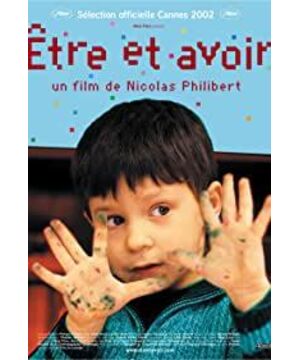As recommended by Chen Wan, last night I went to the Citizen Cinema of CUHK to watch a very warm French documentary "The Sound of Reading in the Mountain Village".
In remote areas of France, there is a type of "single-class" school (i.e. a school with only one class) where all students in a class are taught by a single teacher, from kindergarten until graduation from primary school. The film was shot in a "single class" school in the Auvergne region. Mr. George has taught books in this elementary school for more than 20 years. There are only thirteen students in the school, the youngest is three years old and the oldest is eleven years old. Teacher George has to teach them all their homework, Chinese, mathematics, music, painting, sports, and even home economics, and also serve as their "psychiatrist" to solve all kinds of puzzles in the growth process for these children. But this winter, everything is as usual, but there are huge changes. A year later, Mr. George, who has devoted most of his life to the children and is unmarried, will retire. He will return to the south to accompany his mother, and several older children in the class will also enter junior high school. In this last time, Teacher George has many concerns and reluctance: 10-year-old Olivier's father is seriously ill; 11-year-old Natalie has a learning disability, and she is afraid of going to a new school to face a new environment...
This film is very quiet and simple, and many people may find it boring. But I like it. Through the change of time series, the students and Teacher George's classroom learning, extra-school activities, and family life are recorded flatly. However, the details captured are very warm, and the relationship between teachers and students is expressed in great detail, making people understand the particularity and importance of rural single-class schools. The French film critics commented on this film as "a film that is so simple that it catches the eye", and there is no more concise comment than this.
The film school is located in the Central Plateau of France. When I traveled to Europe three years ago, I took a tourist bus and traveled through this peaceful and beautiful plateau for two days. So I feel very intimate with the scenery in the film. The mooing of cattle, the sound of church bells, and the innocent and lovely students are the sights we have seen many times on the way. I couldn't help but think, it's very possible that the school is in the quiet mountain village where we occasionally stopped, and the children running around in the village are the students in the school...
It was the first time I took Yangyang to watch a movie, and it was a somewhat boring documentary. Unexpectedly, he watched with relish for an hour and a half. And published a lot of unique insights. For example, he is quite sure that the film is called "Spring, Summer, Autumn and Winter". (Probably because of the obvious timing changes in the film.) He was most impressed by one detail in the film: it was raining, and Mr. George's dog was locked out, counting the raindrops in solitude. He accurately deduced this conclusion: "Why not let the dog in? Because it will disturb the children's class." When the beautiful rainbow appeared in the sky after the rain, he couldn't help cheering, and then realized he was watching a movie , Hurry up and cover your mouth, fortunately everyone around him responded with kind smiles. He remembered that Mr. George was driving an Audi when he visited home. The three-year-old newly enrolled child cried and looked for his mother. Teacher George held her helplessly and coaxed her. When Yangyang saw this, she embarrassedly got into my arms and smiled, probably thinking of the scene when she just entered kindergarten...
View more about To Be and to Have reviews







